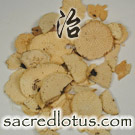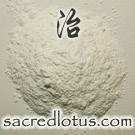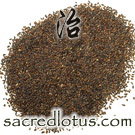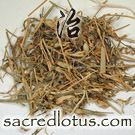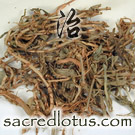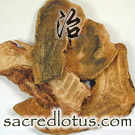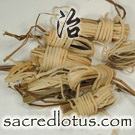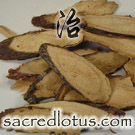Ba Zheng San (Eight Herb Powder for Rectification)
Formula 13 of 23 in Formulas that Expel Dampness
Buy This Formula
Get free shipping from
our partners at CHD
our partners at CHD
Sub-Category:
- Formulas that Promote Urination and Leach out Dampness
Pattern:
- Damp Heat in the Lower Jiao (UB)
Actions:
- Clears heat and drains damp in the lower burner
- Promotes urination.
- Unlocks painful urination.
Indications:
- Burning, painful, dark, bloody, scanty, turbid, and difficult urination
- Distension, pain, and bloating in the lower abdomen.
- Dry mouth and throat, thirst, and a bitter taste in the mouth.
Possible Tongue Appearance:
- Red with a greasy yellow coat
Possible Pulse Patterns:
- Slippery and Rapid Pulse, possibly Forceful
Western Uses:
- Acute urinary tract infection
- Urolithiasis (Bladder Stones)
- Cystitis
- Urethritis
- Acute Prostatitis
- Urinary tract stones
- Acute Nephritis
- Acute Pyelonephritis
Cautions, Contraindications, Herb Drug Interactions:
- Log term use can cause weakness, palpitations, dizziness, and loss of appetite
- Use with caution in weak patients or cold from deficiency.
- Do not use without modification during pregnancy.
Preparation Notes:
- Decoction.
Originally Appeared In:
- Imperial Grace Formulary of the Tai Ping Era (Tai Ping Hui Min He Ji Ju Fang)
Combined Channels of all herbs in this formula:
- Heart, Small Intestine, Bladder, Stomach, Lungs, Kidneys, Liver, Large Intestine, Spleen
There are 9 Substances in this Chinese Medicne
Chuan Mu Tong (Clematis)Quantity = 3-6 grams
Quantity = 12-30 grams
Quantity = 9-15 grams
Quantity = 6-12 grams
Quantity = 6-12 grams
Quantity = 3-9 grams
Quantity = 6-9 grams
Quantity = 3-6 grams
Quantity = 3-9 grams
Find Similar Chinese Formulas
Sacred Lotus can compare the Chinese herbs in this formula to all other formulas on the website. Formula archetypes will list of formulas that have similar herbs, ranked by the number of herbs that match:
Get Formula Archetypes


